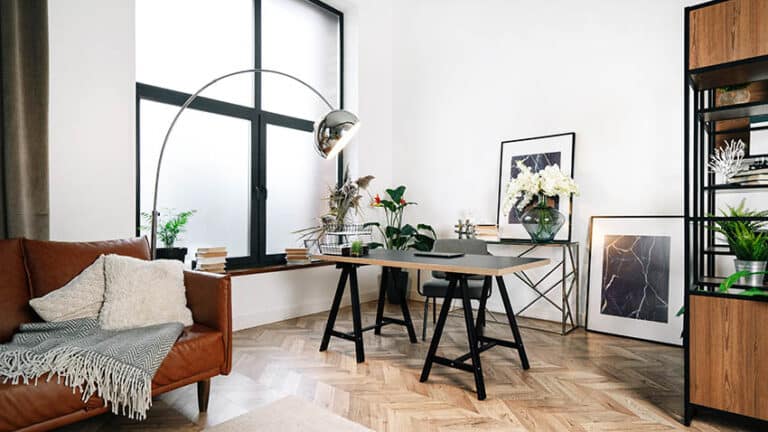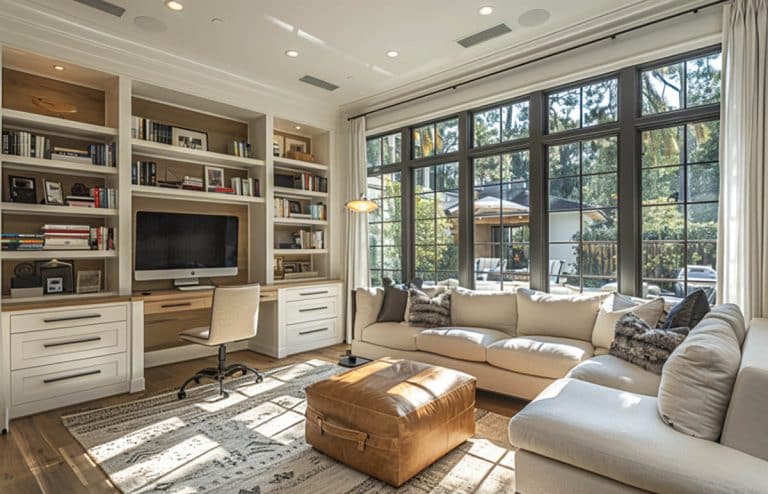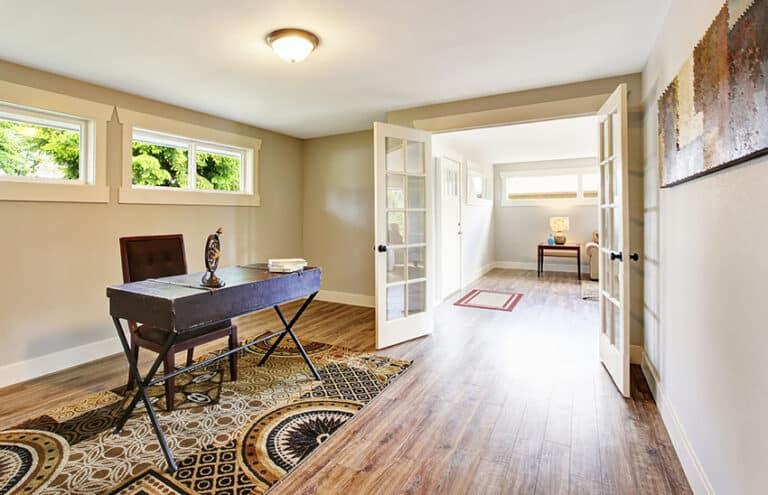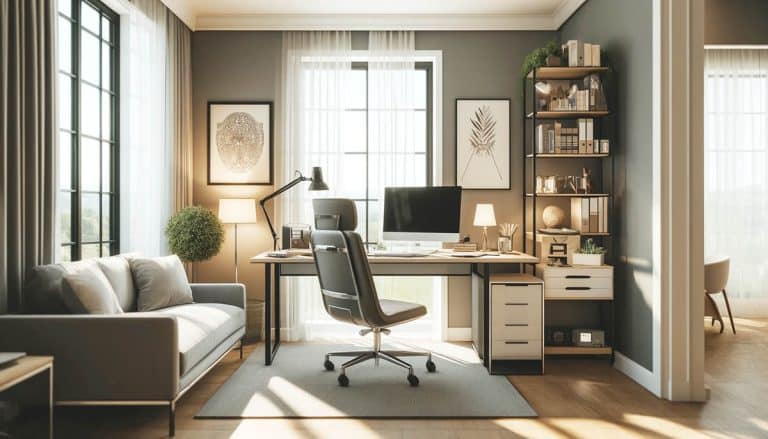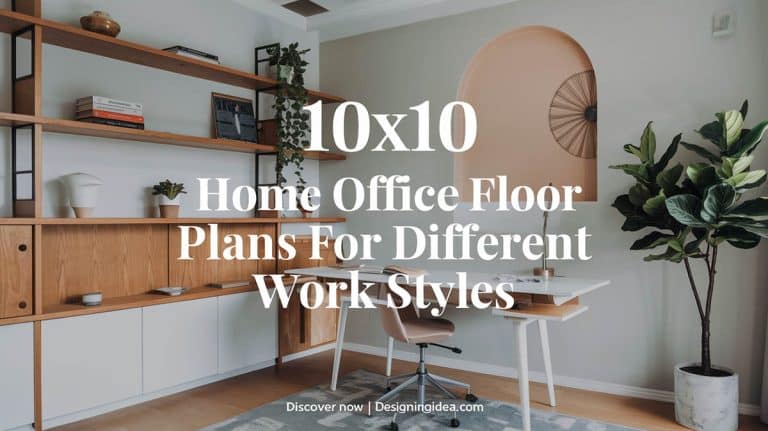Best Light Bulbs For Home Office

These days, more and more people are working from home and it has completely changed the dynamics when it came to how businesses in general operate. It does have its merits. Working from home is also a practical solution not just for businesses but for the staff as well. It does, however, come with its own set of challenges. More and more people working from home have noticed that is has become difficult to separate their home environment from their office environment.
This is where updating your home office’s lighting can come in handy. There are a lot of things to consider when it comes to changing your lighting setup at home to make it feel more business-like or more like an office. Here are a few things for you to consider in order for you to understand what the best light bulbs are for your home office.
Quicklook- Best Bulbs For An Office
| Type | Features | Color Temperature | Examples | Pros | Cons |
|---|---|---|---|---|---|
| LED Bulbs | Energy-efficient, long-lasting | Various | Philips LED & Cree LED | Low energy use and long lifespan | Higher price to buy |
| Smart Bulbs | Adjustable brightness and color | Adjustable | Philips Hue & LIFX | Customizable, and can be controlled remotely | Expensive, requires setup |
| Full-Spectrum Bulbs | Mimics natural daylight | Daylight (5000-6500K) | Verilux & NatureBright | May reduce eye strain | Can be expensive |
| CFLs | Energy-efficient alternative to incandescent | Varies | GE Reveal, Sylvania Micro Mini | Energy-efficient, and affordable | Contains mercury, slower to reach full brightness. Its lower lifespan may be a con |
| Halogen Bulbs | Produces crisp, white light | Warm white (2800-3200K) | Philips EcoVantage, GE Halogen | Instant full brightness, and can be dimmed | Higher energy consumption than LEDs. Have been banned in some areas due to higher consumption |
How Bright Should My Office Lights Be?
Here’s the thing, office lighting that’s either too dim or too bright can work against you creating a home office that’s conducive for productivity. This results in poor office lighting. It can cause fatigue, give you eyestrain, take your focus away, or even end up giving you migraines. It also has adverse effects on the way that your moods swing all throughout the day.
Overly bright lighting can produce glare coming from your electronic devices such as monitors, phones, or tablets. This leads to reduced visuals coming from your electronic screens. Dim lighting makes your eyes work harder than usual especially since the blue light coming from your screen could leave the eyes feeling strained.
How Many Lumens Do You Need For An Office?
Make it a point to consider how much natural light you’re getting when setting up a home office, what type of tasks you’re actually doing, and how big the area is. A standard rule of thumb is to go with a range of 300 to 500 lumens to ensure that your home office lighting will be just right.
If you happen to have other sources of lighting in your home office, you might want to reduce it down to 300 lumens. If the home office space is extremely bright and there are contrasting lights all around, it would be smart to go slightly brighter than usual. 400 to 500 lumens should suffice.
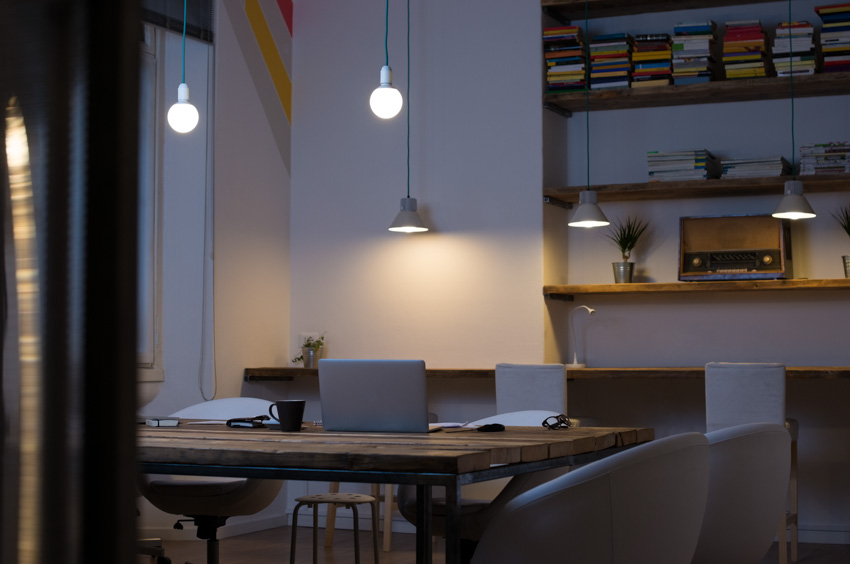
Is Warm Or Cool Light Better For Office?
Color temperature is everything when it comes to determining the best light bulbs for home office. Higher color temperatures ranging above 35,000K have been known to directly improve productivity and learning.
This means that if you have a higher color temperature or a warmer light color in your home office, you get to achieve a higher level of focus and concentration. CFL, Full-Spectrum and LEDs are the best types of bulbs offering high color temperatures although LED ones are more energy-efficient and friendlier on the eyes.
When trying to figure out the lighting placements in your home office, you should also account for the amount of natural light that you are getting overall.
Midday sunlight can actually produce a little over 5,000K. This is why you ought to go out of your way to really position your work desk near a window or any opening that will be able to provide your home office with as much light as possible. On top of all this, natural light has been known to be a really great and effective mood booster so you also get to bask in all the good vibes while you’re working in your designated home office space.
Are LED Lights Good For Office?
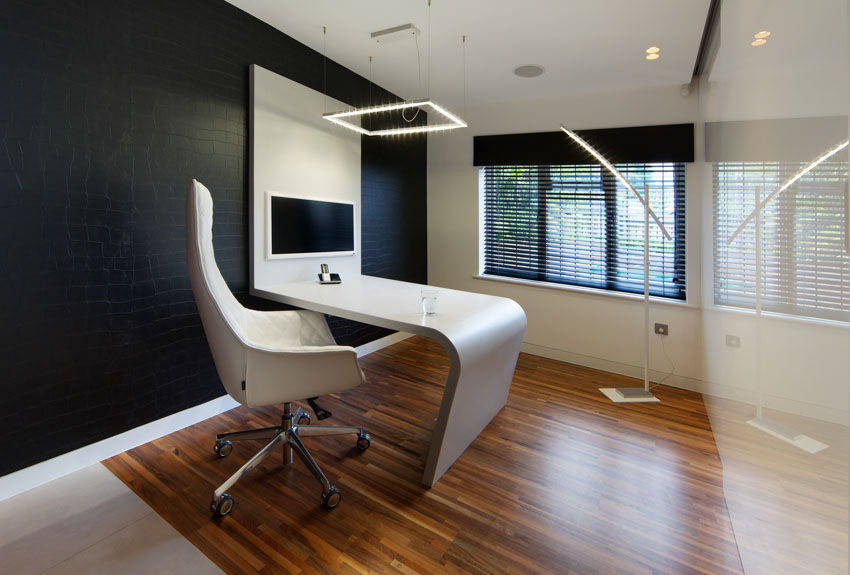
There are tons of reasons why you need to seriously consider getting LED lights for your home office space. They’re known to be energy-efficient, giving you long-term savings on your utility bills. They perform well and they also provide good quality high-temperature lighting for your home office space.
A recent study from NASA has uncovered that LED types of lighting fixtures actually suppress the production of melatonin in the body. It helps your body better manage its circadian rhythms.
When these rhythms are in good form, you are less likely to suffer from sleeping disorders and other forms of sleep deprivation. Here are some of the best benefits you can get out of getting LED lights for your home office:
They improve productivity: It can influence your mood, your performance, and your overall perception when it comes to working from home. The reason why it’s so effective is because LED lights mimic natural light, encouraging the mind and body to “stay awake”.
They regulate your circadian rhythm: Circadian rhythms are highly influential to your physiological processes. This is because LED bulbs have been designed specifically targeted to sync with our circadian rhythms whereas regular light bulbs were not.
They’re energy-efficient: Commercial offices have been switching to LED lights because they get to save up to 70% in energy compared to other more traditional lighting options. This results in substantial savings in the long run.
If you’re bound to work long hours, which are around 9 hours or so on average or perhaps even higher, LED lights can definitely do wonders for your utility bills.We should definitely take a cue from these commercial offices and use LED lights for our home offices as well.
LED bulbs have extended life spans: On average, a LED bulb will have a lifespan of 50,000 hours or so.
A traditional incandescent light bulb can only have a maximum life span of about 1,000 hours or so. A fluorescent lamp can last from 8,000 to 10,000 hours but when you come to think of it; none of them compare to a tech-savvy LED bulb.
And because they have a much longer life span, it means that they’re quite low maintenance because you wouldn’t have to replace them so much.
LED lights emit less heat: They have low operating temperatures so they don’t emit as much heat as their incandescent counterparts. This can heavily influence the temperature of your home office space.
Your air conditioner won’t be pushed to work harder so you’re also reducing wastage on your overall electricity consumption, helping you save more on your energy bills at home.
LED lights don’t attract bugs: Because of the fact that they don’t emit a lot of heat, they don’t appeal to bugs and moths. Older incandescent lights, on the other hand, dispense UV rays and heat and this attracts them.
LED light bulbs are eco-friendly: They have an average carbon emission of 514 lbs of carbon dioxide in a year as compared to a typical incandescent light bulb which is at around 1601 lbs of carbon dioxide annually.
They create no noise: Despite after years and years of use, LED light bulbs don’t generate noise when they’re being turned on, unlike incandescent light bulbs.
That buzzing sound whenever the power fluctuates can disrupt your workflow and break your concentration at home. This wouldn’t be a problem for you if you had LED lights on.
LED light bulbs are sturdier: They don’t use the usual filament or neon gas anymore. Instead, they’re made of much sturdier semiconductor materials. It’s basically a microchip that has been enclosed in a plastic container. This means that it can bear multiple falls and never break.
It offers smart lighting: You can program your LED lights from scheduled times to turn them on or off, wireless control, and even getting them dimmed.
Smart lighting is convenient because you can control everything from a remote without ever having to flip an actual physical switch on the wall. When you think about it from a home office standpoint, it means that there’s no need to peel yourself off of your office chair just to get your lighting adjusted.
It’s safe: This is because LED light bulbs don’t have any mercury content in them. It gives away little to no heat and zero UV rays while turned on. The health benefits you can get out of this from a long-term perspective are immense.
They can operate even in extreme climates: Unlike other light sources, the light that they emit doesn’t dim during extremely low temperatures. They also don’t require to be “warmed up”.
The moment that you turn them on, they’re on and they deliver the best lighting possible every single time.
They can work on low voltage: This means that you continually get a great light source even during the times when power supply conditions are low and not that ideal. Incandescent light bulbs get damaged with a low power supply while LED lighting doesn’t so there’s never a need to get it replaced.
What About Full-Spectrum Bulbs?
Full-spectrum lighting enhances mood and focus by regulating the body’s inner clock. The sun’s rays cue our circadian rhythms, boosting alertness and concentration while reducing drowsiness. Similarly, full-spectrum bulbs provide consistent lighting without flicker or glare. This helps employees stay engaged on detailed tasks for longer periods without succumbing to eyestrain or drowsiness. No more afternoon energy slumps!
Additionally, the wide color spectrum makes hues appear more vivid and true-to-life. Unlike the washed-out appearance under white fluorescents, full-spectrum bulbs render colors accurately. For graphic designers and other visually-oriented roles, this can mean better quality work.
The flexibility allows customization across office spaces. Full-spectrum LED bulbs screw into typical overhead fixtures or desk lamps. Their energy efficiency also lowers costs. And the balanced light may reinforce healthy sleep cycles, further boosting productivity. By mimicking natural sunlight, full-spectrum bulbs can transform dingy offices into vibrant spaces where employees happily humming away. Let the sun shine in—no matter if there’s sunlight outside or not.
What Is The Best Lighting For Working On A Computer?

Working for long hours on a computer can be taxing on the eyes. The best and recommended lighting for it would be the type of lighting that’s glare-free, low level, and ambient. This type of lighting offers the best type of overhead illumination when you’re sitting down and working on a computer.
Flicker-free LED bulbs help avoid disruptive imperceptible flicker that interrupts concentration. With the right balance of natural light, ambient fill, task lighting and monitor brightness, you can create a comfortable and productive workspace.
You can get this done by either removing some fluorescent tubes or light bulbs to tone down excessive types of ceiling lights or you can get them replaced with light bulbs that have low wattage requirements.
How Can I Improve My Office Lighting?

Be smart with your light fixture placements: Position your lights parallel to the windows in your home office so that you will be able to effectively mimic natural light. This strikes the perfect balance between artificial lighting and natural lighting for your home office.
Make use of task lights on your desk: Relying more on them as opposed to your overhead ceiling lights can reduce your energy consumption by up to as much as 70 percent.
Pick task lights that are sustainably designed. Specifically aim for CFL or LED lighting sources so that your energy consumption is efficient.
Get the most out of natural light: Your office window coverings play a big part in the lighting in your room. Make sure you have window shades or curtains that allow you to effectively control the room’s natural light.This can help provide more relief for your eyes.
Go for diffused lighting to reduce glare: Diffused light that’s well distributed is the best for your home office. This eliminates glare surfaces as well as hot spots from your line of vision while you’re working.
The contrasts created will also end up looking softer, making it friendlier on the eyes. One design trick you ought to get on board with is also using matte and light colors on the walls of your home office. This reduces sharp shadows and contrasts while also reflecting indirect lighting.

